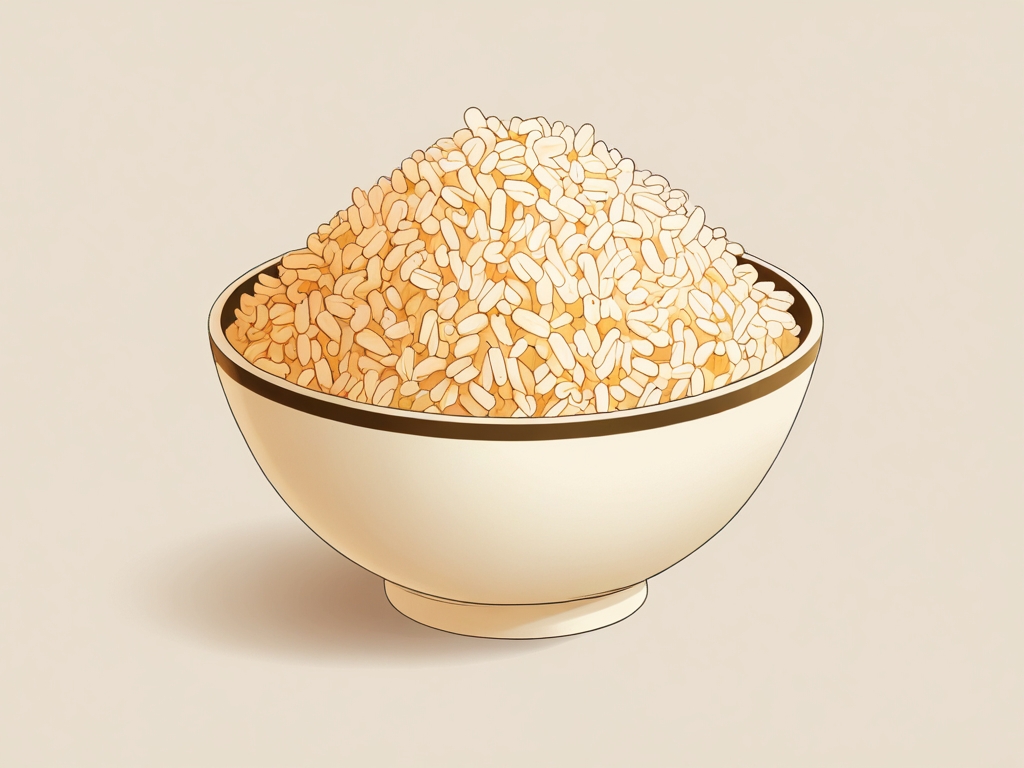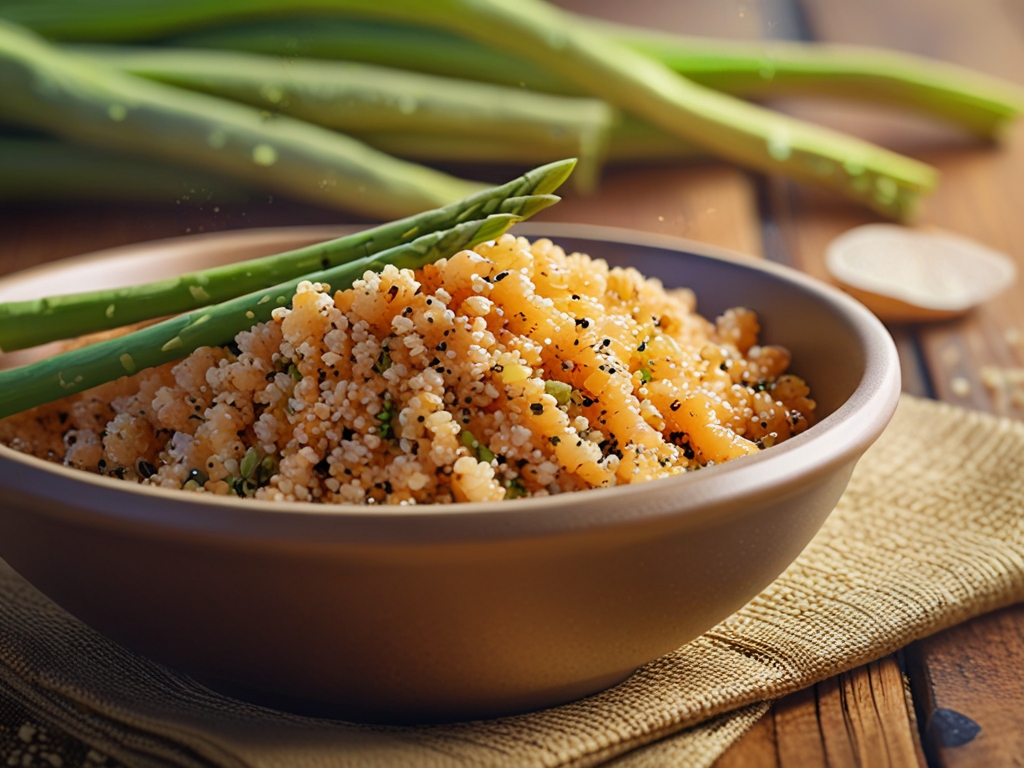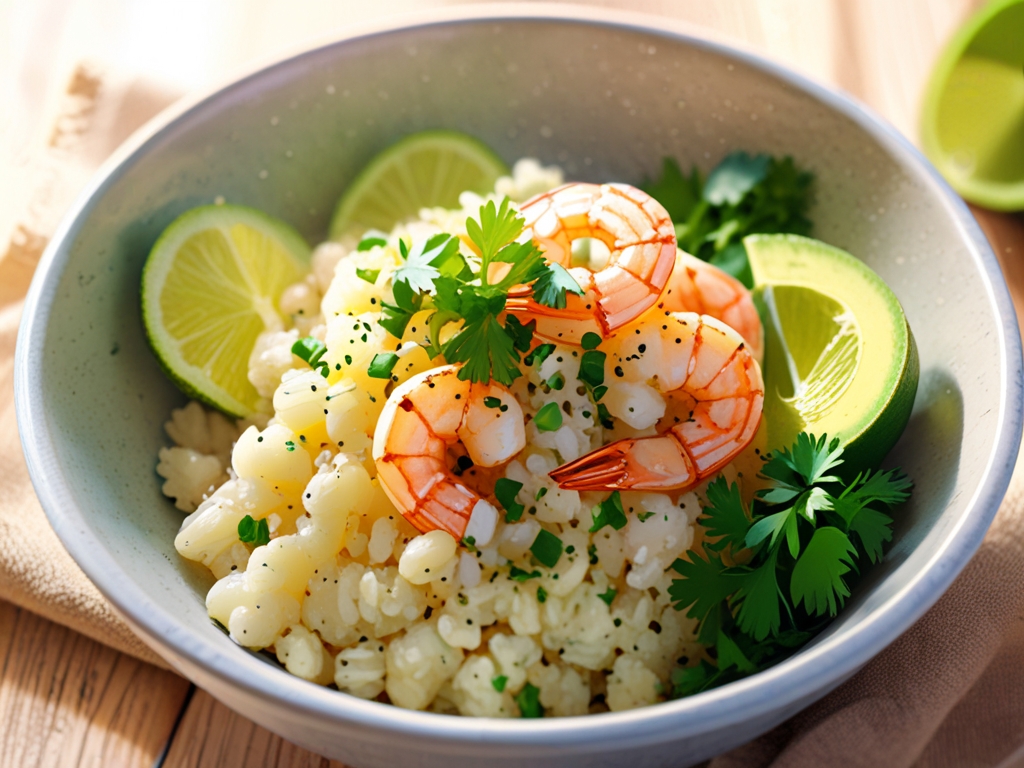Have you ever wondered, “can you eat rice on low carb diet?” or “can you eat rice on keto diet?” Rice has been a staple for many cultures and diets, but with rising popularity of low-carb and keto lifestyles, many question whether rice fits into these regimens. In this article, we will dive deep into the relationship between rice and low-carb diets, explore the nutritional science behind this debate, and provide you with delicious, healthy alternatives.
Introduction: Rice in the World of Diets
For many, a warm bowl of rice is comfort food that symbolizes home and tradition. Yet, for those looking to reduce carbohydrate intake, the question becomes tricky. The common kitchen essential has long been scrutinized for its carbohydrate content. In low-carb diets like keto, where carbohydrate intake is drastically reduced to kick the body into a fat-burning state, rice might seem like an unlikely friend.
This article will answer your burning questions—can you eat rice on low carb diet, and can you eat rice on keto diet—while also offering creative, tasty alternatives. We’ll explore both the science and the delicious possibilities that await those willing to tweak traditional recipes.
Understanding Low-Carb and Keto Diets
What is a Low-Carb Diet?
A low-carb diet limits carbohydrate consumption compared to a standard diet. The basic idea is to reduce the intake of foods high in sugars and starches and to boost protein and fat consumption. This shift in macronutrients can help stabilize blood sugar levels, support weight management, and enhance overall energy.
One primary concern is that many staple foods, including rice, are rich in carbohydrates, making them less suitable for someone on a strict low-carb plan. The underlying idea is to let your body switch from burning carbohydrates to fat—a process known as ketosis.
Understanding the Keto Diet
The keto diet, an extreme version of low-carb eating, requires that you limit your carbohydrates severely (often to less than 50 grams per day) while maintaining moderate protein and high fat consumption. The aim? To drive the body into a state of ketosis, where it burns fat for fuel instead of carbohydrates.
Because rice is predominantly carbohydrate, its inclusion can easily derail the process. So, often the advice is clear: if you’re following a strict ketogenic plan, you’ll need to find alternatives that are lower in carb content, while still offering the versatility and texture rice provides in many dishes.
The Nutritional Breakdown: Rice and Its Carb Content
Let’s take a closer look at rice’s nutritional value. A cup of cooked white rice typically contains anywhere from 40 to 45 grams of carbohydrates. Brown rice, though considered healthier due to its fiber content, still packs a similar carbohydrate load.
When you ask yourself, “can you eat rice on low carb diet?” the answer becomes a matter of quantity and context. In a diet where the total carbohydrate allowance is very low, even a small serving of rice might take up a substantial portion of your daily carb allowance—making it challenging to incorporate other nutrient-rich, lower-carb foods.
For those on a keto diet, the numbers speak louder: with such low carbohydrate limits, consuming rice is nearly impossible without exiting ketosis, the very state that many are striving to achieve.
Can You Eat Rice on Low Carb Diet? Exploring the Possibilities
It’s not entirely black and white. The answer may vary depending on your dietary goals and the type of low-carb diet you’re following. Here are some key points:
- Moderation is Key: If you’re following a more relaxed low-carb plan (like the Atkins diet in its later phases), you might be able to include small portions of rice occasionally. However, this requires careful counting of your total daily carbs.
- Carb Cycling: Some dieters adopt a carb cycling approach, where they periodically incorporate higher-carb days to refuel their bodies. In such cases, rice could be consumed on these specific days, as long as you plan accordingly.
- Quality Matters: The type of rice you choose might also play a role. For example, wild rice or black rice might offer additional nutrients, though they still contain high carbohydrates.
Even if you ask, “Can you eat rice on keto diet?” the answer is less straightforward, as traditional rice doesn’t fit the nutrient profile required to stay in ketosis. For strict ketogenic adherents, rice is generally off the menu.

Health Implications of Including Rice on Low Carb Diet
Potential Drawbacks
- Blood Sugar Spikes: With its high glycemic index, rice can cause rapid increases in blood sugar levels, which may not be ideal if you’re trying to manage conditions like type 2 diabetes.
- Limited Ketosis: For those aiming for ketosis, the extra carbs from rice can push your body out of the fat-burning state, reducing the primary benefits of the keto diet.
- Nutrient Imbalance: Relying heavily on rice in a low-carb diet might leave you with insufficient amounts of fiber, healthy fats, and other micronutrients that are vital for overall health.
Potential Benefits in Certain Contexts
- Cultural and Emotional Connection: Food is more than just nutrients; it’s culture and comfort. For many, completely eliminating rice might be too drastic, potentially leading to dietary fatigue and ultimately unsustainable changes.
- Mindful Eating: When incorporated mindfully and in small portions, rice can be enjoyed occasionally without completely throwing off your dietary balance. It might be suited for carb refeed days in more flexible diet plans.

Low-Carb Alternatives to Rice
If the numbers don’t add up for rice in your diet, don’t worry—there are plenty of creative alternatives to explore that will keep your taste buds satisfied and your carbohydrate count low.
Cauliflower Rice
- Description: Made by grating or processing cauliflower, this alternative mimics the texture of rice with a fraction of the carbs.
- Benefits: Low in calories, high in vitamins C and K, and packed with antioxidants. Cauliflower rice is versatile and can be used in stir-fries, bowls, or even sushi.
- Preparation Tips: Lightly sauté with garlic and olive oil or steam and blend with herbs for added flavor.
Shirataki Rice
- Description: Often referred to as “miracle noodles,” shirataki rice is made from the konjac plant. It offers a similar look and feel to rice but with significantly fewer carbohydrates.
- Benefits: Extremely low in calories and carbs, making it perfect for keto and other low-carb diets.
- Preparation Tips: Rinse thoroughly to remove the natural odor, then cook with your favorite spices or sauce to enhance its flavor.
Cabbage Rice
- Description: Finely chopped cabbage can be steamed or stir-fried to resemble rice. It holds its shape well and absorbs flavors beautifully.
- Benefits: Rich in fiber, vitamins, and minerals, cabbage rice adds a delightful crunch and savory flavor to meals.
- Preparation Tips: Sauté with onions, garlic, and a touch of soy sauce for a tasty, low-carb side dish.
Broccoli Rice
- Description: Similar to cauliflower rice, broccoli rice is made by pulsing broccoli in a food processor until it has a rice-like consistency.
- Benefits: High in vitamins and phytonutrients that support immune health, broccoli rice adds both nutrition and a vibrant green color to your plates.
- Preparation Tips: Steam or sauté with a light drizzle of olive oil and lemon juice to preserve its bright flavor and texture.
Miracle Rice Alternatives
- Zucchini Rice: Grated zucchini can serve as a refreshing alternative that’s both low in carbohydrates and bursting with moisture.
- Spaghetti Squash Rice: A slightly chunkier alternative that provides texture while keeping you in line with your dietary goals.
- Edamame Rice: Blended edamame (young soybeans) creates a protein-rich, low-carb rice substitute that’s both filling and nutritious.
Incorporating Alternatives into Your Daily Meals
Transitioning away from traditional rice may initially feel like a big change, especially if you associate rice with comfort and tradition. However, the alternatives listed above are not only healthy but also incredibly versatile.
- Stir-Fries: Use cauliflower or broccoli rice as the base for a vibrant stir-fry featuring lean proteins, a variety of vegetables, and your favorite low-carb sauces.
- Grain Bowls: Combine shirataki rice with vibrant vegetables, nuts, and lean meats to create a balanced and satisfying bowl meal.
- Sushi Bowls: For a modern twist on classic sushi, replace white rice with cauliflower or cabbage rice. Top with avocado, cucumber, and sashimi-grade fish for a delicious and keto-friendly meal.
- Side Dishes: Experiment with small portions of these alternatives as a side dish to complement your main course, ensuring a balanced meal in each bite.
Using these strategies, you can maintain a flavorful diet while still adhering to your low-carb or keto dietary goals. Remember, the shift is not just about eliminating a food item, but enriching your culinary experience with diverse, nutrient-packed alternatives.

Can You Eat Rice on Keto Diet? A Closer Look
The repeated query, “can you eat rice on keto diet?” emphasizes the concerns many face when adopting a ketogenic lifestyle. For most people on strict keto, even small portions of rice can impede reaching or maintaining ketosis.
Why Rice Isn’t a Fit for Keto
- Carbohydrate Overload: Even a modest serving of rice can contribute a significant amount of carbohydrates, which is counterproductive in a diet that typically allows fewer daily carbs.
- Impact on Ketosis: When the body is forced to process an influx of carbohydrates, it shifts back into using glucose for energy, which disrupts the metabolic shift necessary for ketosis.
- Limited Alternatives: While rice is culturally significant, its carbohydrate content makes it challenging to integrate into nearly all keto meal plans without careful carb management.
Balancing Flexibility with Goals
For those who are determined to have a taste of rice occasionally, some have experimented with blending a small portion of rice with larger portions of lower-carb rice alternatives. While this might slightly mitigate the carbohydrate load, the key is moderation and frequent monitoring of ketone levels. Research and anecdotal evidence suggest that sticking with rice alternatives is the best way to adhere to a strict ketogenic regimen while still enjoying diverse meals.
The Broader Picture: Lifestyle Changes and Sustainable Eating
Dietary transitions go beyond simply removing a food item from your regimen. Embracing a low-carb or keto diet often means rethinking your eating habits and discovering a world of alternatives that can stimulate your palate and support your health goals.
Adapting to Change
- Experimentation: Trying out new recipes with alternatives like cauliflower rice allows you to innovate in the kitchen. This not only keeps meal times exciting but also aligns with your health goals.
- Mindful Transition: A gradual change can help your body adjust better. Perhaps start with replacing one rice-based meal per day and observe how your body responds.
- Support Systems: Engaging with communities online, joining low-carb recipe groups, or simply exploring blogs dedicated to keto dieting can provide inspiration and support during the transition.
Building Sustainable Habits
Remember that any diet should be sustainable. Consistency is key, and a rigid approach might lead to burnout. Balance is all about enjoying your meals while also paying close attention to what your body needs. Integrating alternatives into your daily diet not only makes your regimen more flexible but can also lead to lifelong healthy eating habits.

Recipes to Try: Bringing Alternatives to Life
Here are two creative recipes that take your favorite carb-friendly textures and make them suitable for a low-carb or keto lifestyle.
Recipe 1: Cauliflower Fried “Rice”
- Ingredients:
- 1 head of cauliflower (riced)
- 1 cup mixed vegetables (like peas, carrots, and bell peppers)
- 2 eggs, lightly beaten
- 2 cloves garlic, minced
- 2 teaspoons soy sauce (or coconut aminos for a keto-friendly option)
- Sesame oil and green onions for garnish
- Preparation:
- Sauté garlic in sesame oil until fragrant.
- Add mixed vegetables and stir-fry until tender.
- Push vegetables aside and scramble the eggs until fully cooked.
- Mix in the cauliflower rice and soy sauce, cooking until the cauliflower is tender.
- Garnish with green onions and serve. This recipe is an excellent low-carb twist on a classic dish that satisfies the craving for rice without the extra carbs.
Recipe 2: Shirataki Rice Stir-Fry
- Ingredients:
- 1 package shirataki rice
- 1 cup snap peas
- 1 red bell pepper, thinly sliced
- 2 cloves garlic, minced
- 1 tablespoon ginger, grated
- 1 medium chicken breast or tofu, cubed
- 2 tablespoons low-sodium soy sauce (or tamari)
- A sprinkle of sesame seeds for garnish
- Preparation:
- Rinse the shirataki rice thoroughly.
- In a pan over medium heat, sauté garlic and ginger in a little oil.
- Add your choice of protein (chicken or tofu) and vegetables, sautéing until cooked.
- Stir in the shirataki rice and soy sauce, cooking for an additional 3-4 minutes.
- Top with sesame seeds before serving. This dish not only emulates rice’s texture but also satisfies your hunger with its rich flavors and minimal carbohydrates.
Final Thoughts: Creating a Diet That Works for You
The debate of “can you eat rice on low carb diet” and “can you eat rice on keto diet” boils down to priorities. If your goal is to remain in ketosis or dramatically lower carbohydrate intake, then traditional rice might not be the best choice. However, there is a world of alternatives available—each offering unique benefits and culinary possibilities—to ensure you never miss out on the texture and tradition of rice-based meals.
Embracing alternatives like cauliflower rice, shirataki rice, cabbage rice, or even broccoli rice provides diverse options that can be tailored to your taste, nutritional needs, and cultural inclinations. You can enjoy your favorite dishes, experiment with creative recipes, and keep your carb count in check—all while nourishing your body and delighting your palate.
Actionable Steps to Start Your Low-Carb Journey
- Evaluate Your Current Diet: Track your daily carbohydrate intake to understand where improvements can be made.
- Experiment with Alternatives: Try making a few recipes using rice alternatives and see which ones please your taste buds.
- Refine Your Recipes: Over time, adjust and find the perfect balance that delivers satisfying meals while still supporting your low-carb or keto goals.
- Monitor Your Progress: Use apps or health trackers to monitor how these changes affect your energy levels and overall well-being.
- Stay Inspired: Follow blogs, join online communities, or even subscribe to newsletters focused on low-carb and keto diets to keep excitement alive.
Transitioning from a traditional diet to a low-carb or keto lifestyle requires thoughtful planning, experimentation, and a commitment to long-term health. With mindful choices and creative substitutions, you can continue to enjoy the textures and flavors of rice-based dishes without compromising your dietary goals.
Wrap-Up
To recap, while the answer to “can you eat rice on low carb diet” or “can you eat rice on keto diet” might be a firm no for strict dieters, there are plenty of alternatives available. By embracing low-carb substitutes like cauliflower rice, shirataki rice, cabbage rice, and broccoli rice, you ensure that you remain nutritionally satisfied while still aligning with your health objectives.
Finding a balance that allows you to enjoy your meals and meet dietary goals is crucial. So, why not experiment today, discover new textures, and reinvent your meals? Let your culinary creativity shine—your body and taste buds will thank you for it.
Happy cooking and healthy living—here’s to your success on any dietary journey you choose!

Leave a Reply